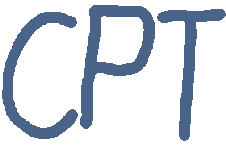
|
Calendar of Physics Talks Vienna
| L-functions and the conformal bootstrap |
| Speaker: | Dalimil MAZAC (CEA Paris-Saclay) |
| Abstract: | Recently, a close parallel emerged between conformal field theory in general dimension and the theory of automorphic forms.
I will review this connection and explain how it can be leveraged to make rigorous progress on central open problems of number theory, using methods from the conformal bootstrap. In particular, I will use the crossing equation to prove new subconvex bounds on L-functions. |
| Date: | Tue, 07.10.2025 |
| Time: | 14:00 |
| Duration: | 60 min |
| Location: | Erwin-Schroedinger-Lecture Hall, 1090 Vienna, Boltzmanngasse 5, 5th floor |
| Contact: | S. Fredenhagen, M. Sperling |
| Helicity-resolved Raman spectroscopy of chiral materials |
| Speaker: | Girsh Blumberg (Rutgers University) |
| Abstract: | Chirality is geometric property according to which an object is mirror-asymmetric irrespective of orientation. Chiral mediums rotate the polarization of propagating electromagnetic waves. They may exhibit chiral optical response, spin-momentum locking, to name a few remarkable properties.
Using rare methodology - helicity-resolved Raman spectroscopy - an example of chiral medium is investigated – layered material 1T-TaS2 – which hosts a series of charge-density-wave transitions. The states below 350 K are chiral with a composite domain structure; they are believed to preserve inversion yet omit mirror symmetries. Still, the physical consequences of the chiral order, e.g., in electronic structures and the optical properties, are yet to be explored.
|
| Date: | Tue, 07.10.2025 |
| Time: | 16:00 |
| Duration: | 45 min |
| Location: | Freihaus, Sem.R. DB gelb 07, https://maps.tuwien.ac.at/?q=DB07E11 |
| Contact: | Andrei Pimenov |
| Superconductivity in Epitaxial Gallium-doped Germanium |
| Speaker: | Peter Jacobson (School of Mathematics and Physics, The University of Queensland, Brisbane/Australia) |
| Abstract: | Introducing superconductivity into group IV elements by doping has long promised a pathway to introduce quantum functionalities into well-established semiconductor technologies. Recent progress with non-equilibrium hyperdoping has shown superconductivity in C, Si, and Ge, but the role of disorder and dopant clustering has obscured the origin of this effect. I will present our work on epitaxial growth of gallium-hyperdoped germanium films and trilayer heterostructures by molecular beam epitaxy. These films reach extreme hole concentrations, via nearly 18% Ga substitution, and display superconductivity with a transition temperature of 3.5 K. Using synchrotron X-ray absorption and scattering, we find that Ga atoms incorporate substitutionally in the Ge lattice, introducing a slight tetragonal distortion. First-principles calculations support these findings and point to the formation of a na |
| Date: | Tue, 07.10.2025 |
| Time: | 16:00 |
| Location: | TU Wien, Institut für Angewandte Physik, E134 1040 Wien, Wiedner Hauptstraße 8-10 Yellow Tower „B“, 5th floor, SEM.R. DB gelb 05 B |
| Contact: | Jiri Pavelec |
| CP conservation in the strong interactions |
| Speaker: | Bjoern GARBRECHT (TU Munich) |
| Abstract: | The Standard Model successfully describes particle physics phenomenology. However, it is often argued that due to the presence of the so-called topological term, the strong interactions violate charge-parity (CP). The tight upper bounds on the neutron electric dipole moment would then indicate a fine-tuning problem pointing to physics beyond the Standard Model. But is that so?
To answer this question, I will explain that chiral perturbation theory as an effective model of hadrons does not uniquely specify whether there is strong CP violation or not. Thus, I reconsider topological aspects. In functional quantization, where vacuum correlators are calculated in the limit of infinite Euclidean time, integer topological sectors only emerge in the same limit... |
| Date: | Tue, 07.10.2025 |
| Time: | 16:15 |
| Duration: | 60 min |
| Location: | Erwin-Schroedinger-Lecture Hall, 1090 Vienna, Boltzmanngasse 5, 5th floor |
| Contact: | A. Hoang, M. Procura |
| Worldsheet CFT_2 and Celestial CFT_2: An AdS_3/CFT_2 perspective |
| Speaker: | Nishant Gupta (NISER Bhubaneswar, India) |
| Abstract: | Celestial conformal field theory in d dimensions is the putative dual of quantum gravity in asymptotically flat (d+2) dimensional space-time. In this talk, I will give an argument that a class of d-dimensional Celestial CFT can be engineered via AdS-CFT correspondence. The argument is based on the observation that zooming in near the boundary of (d+1) dimensional (Euclidean) AdS, the conformal isometry group of EAdS (SO(d + 2, 1)), contracts to the Poincare group ISO(d + 1, 1). This suggests that the near-boundary scaling limit of a (d+1) dimensional theory of conformal gravity on EAdS should be dual to a boundary d-dimensional CFT with ISO(d + 1, 1) symmetry. This dual CFT, since the symmetries match, is an example of d-dimensional Celestial CFT. Among other things, I will discuss the near-boundary scaling limit of the bosonic string theory on 3d Euclidean AdS. |
| Date: | Thu, 09.10.2025 |
| Time: | 14:00 |
| Duration: | 60 min |
| Location: | Online; Zoom broadcast in DA08E10, Green tower, 8th floor, Wiedner Hauptstrasse 8-10; Zoom link: https://tuwien.zoom.us/j/62240995832?pwd=LufO2sHa8pM2VaMqwQIOeURhBaTqMe.1 |
| Contact: | Ankit Aggarwal, Daniel Grumiller |
|
